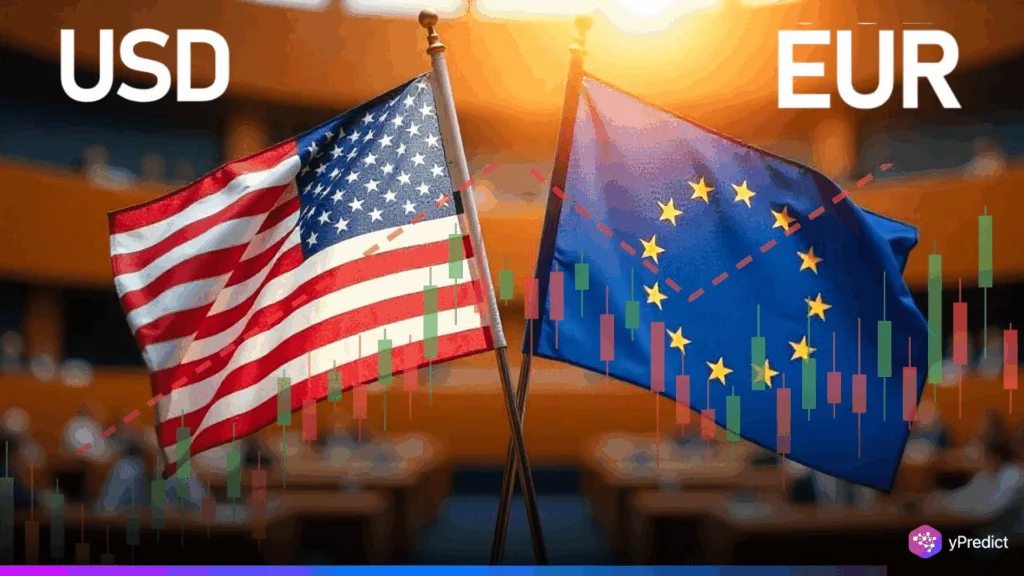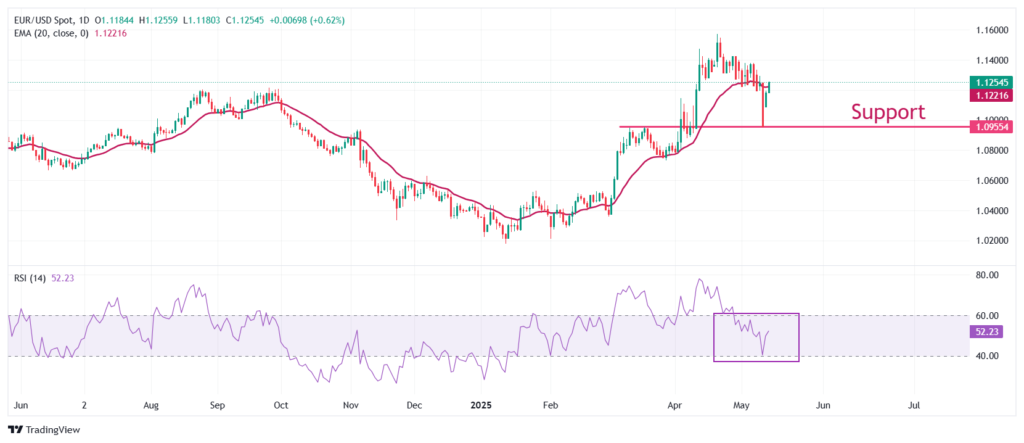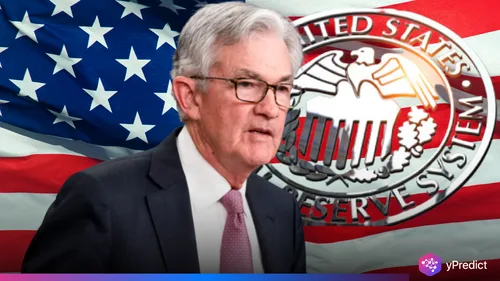
The EUR/USD pair surged toward 1.1250 on Wednesday as traders reacted to weaker US inflation data, continuing its recent recovery. The weak inflation figure caused the dollar index to fall. The ECB, on the other hand, maintained its dovish stance and hinted that rates might be cut by summer. Despite political pressure and cooling prices, the Fed has not yet announced a shift in its policy stance.
EUR/USD Pair Rises After Inflation Cools
The release of the US inflation report for April gave the EUR/USD pair new impetus. The Consumer Price Index had its lowest annual increase in more than four years, rising just 2.3%. The dollar index was significantly impacted by this weaker data. It has dropped to roughly 100.50 from a recent peak of 102.00. The euro’s purchase by traders caused the pair to approach 1.1250.
Once more, President Trump attacked Fed Chair Jerome Powell for postponing monetary easing. Trump posted on X that the cost of fuel, groceries, and other necessities was dropping sharply and demanded an immediate rate cut. He underlined that, like other strong economies like China and Europe, the Fed must act swiftly. However, traders remained cautious and showed little hope for a rate change before September.
Can Political Pressure Trigger a Rate Shift?
As per the CME FedWatch tool, the probability of maintaining unchanged rates in July dropped slightly from 65.1% the day before to 63.3%. While this suggests growing expectations for a future change, it is not yet a definite sign of a change.
The dollar index likewise saw a decline in trade tensions between the United States and China. Tariff reductions and a temporary truce stabilized the economic outlook. This partially counteracts the downward pressure caused by the low inflation rate in the United States. However, because the US-EU trade talks are still unclear, markets are wary of further disruptions.
Technical Support Builds in the EUR/USD Pair
The EUR/USD pair has technically surpassed its 20-day EMA. A short-term bullish trend is confirmed by its current position close to 1.1220. Additionally, the 14-day RSI has recovered from 40.00. This shows that there is still interest from buyers. The next major resistance is at 1.1425, while support is at about 1.0950.

The focus will now turn to Fed Chair Powell, who is expected to give a speech at the Thomas Laubach Research Conference on Thursday. Particularly in the aftermath of the trade truce and low US inflation, investors search for clues about possible policy changes. A large market swing could result from any signs of a potential rate cut.
Bulls Hold Edge Despite Uncertainty
A declining dollar index and weak US inflation are helping the EUR/USD pair gain ground. The Fed has not yet committed to lowering interest rates, despite rising expectations. Due to the dovish signals from the ECB and the uncertainty surrounding global trade, the short-term trend of the euro is still reliant on incoming data. Traders should prepare as momentum is driven by the balance between inflation, central bank policy, and international trade developments.







